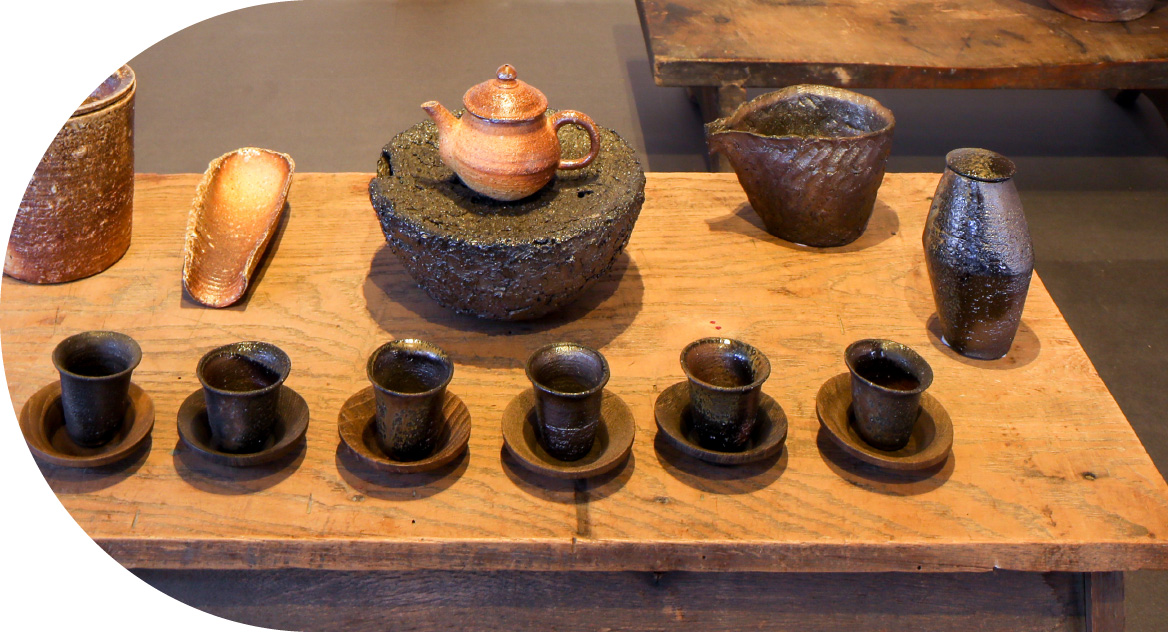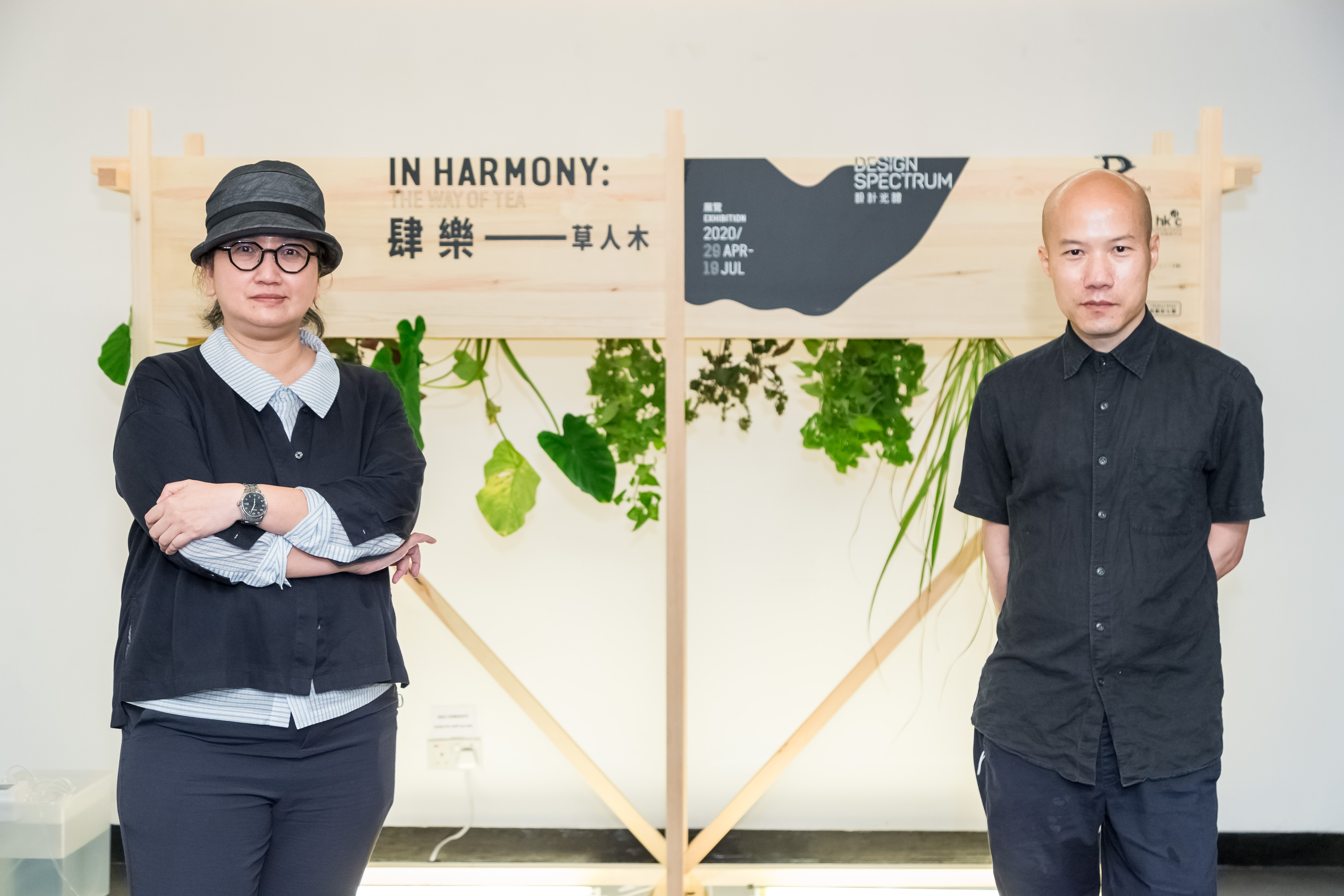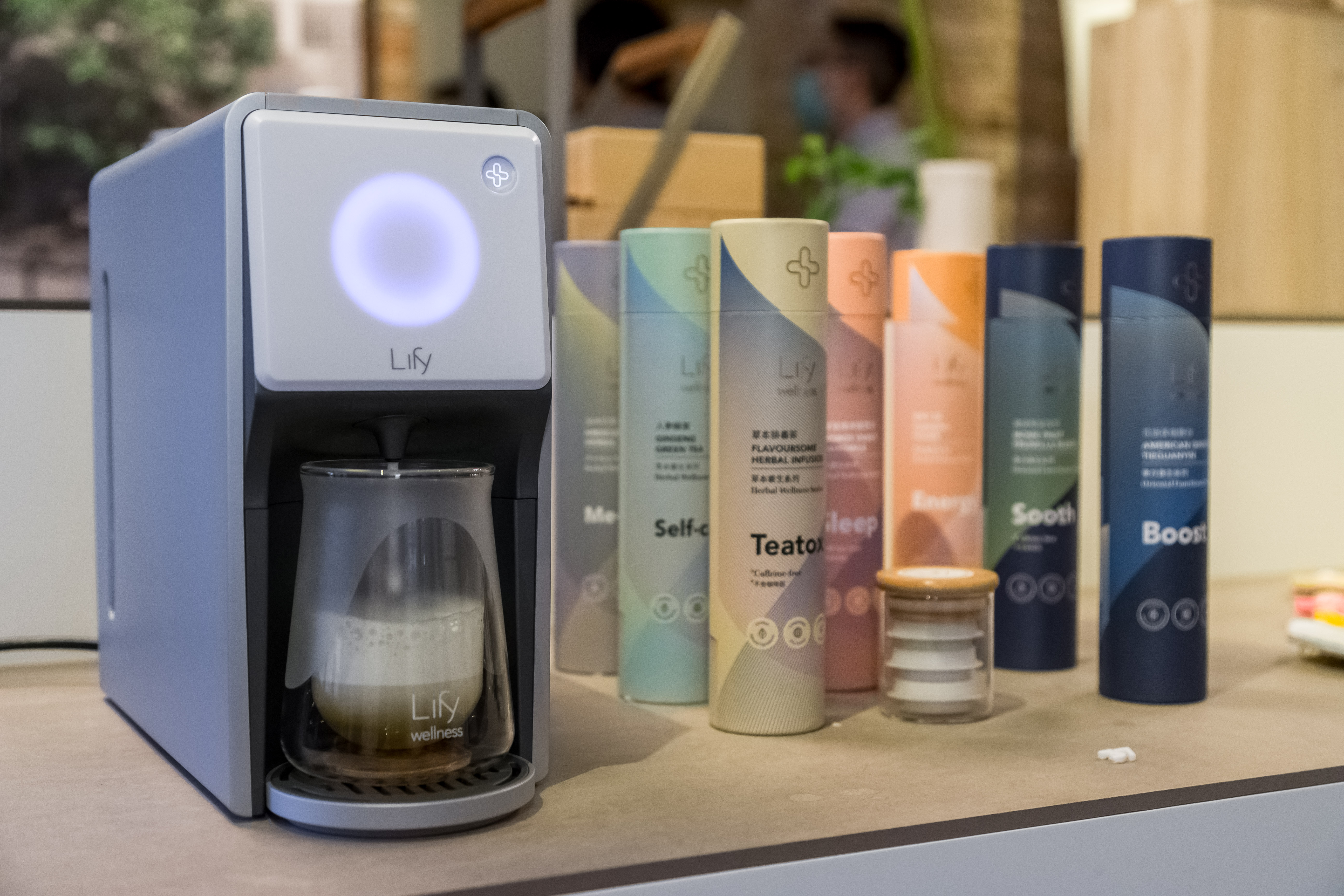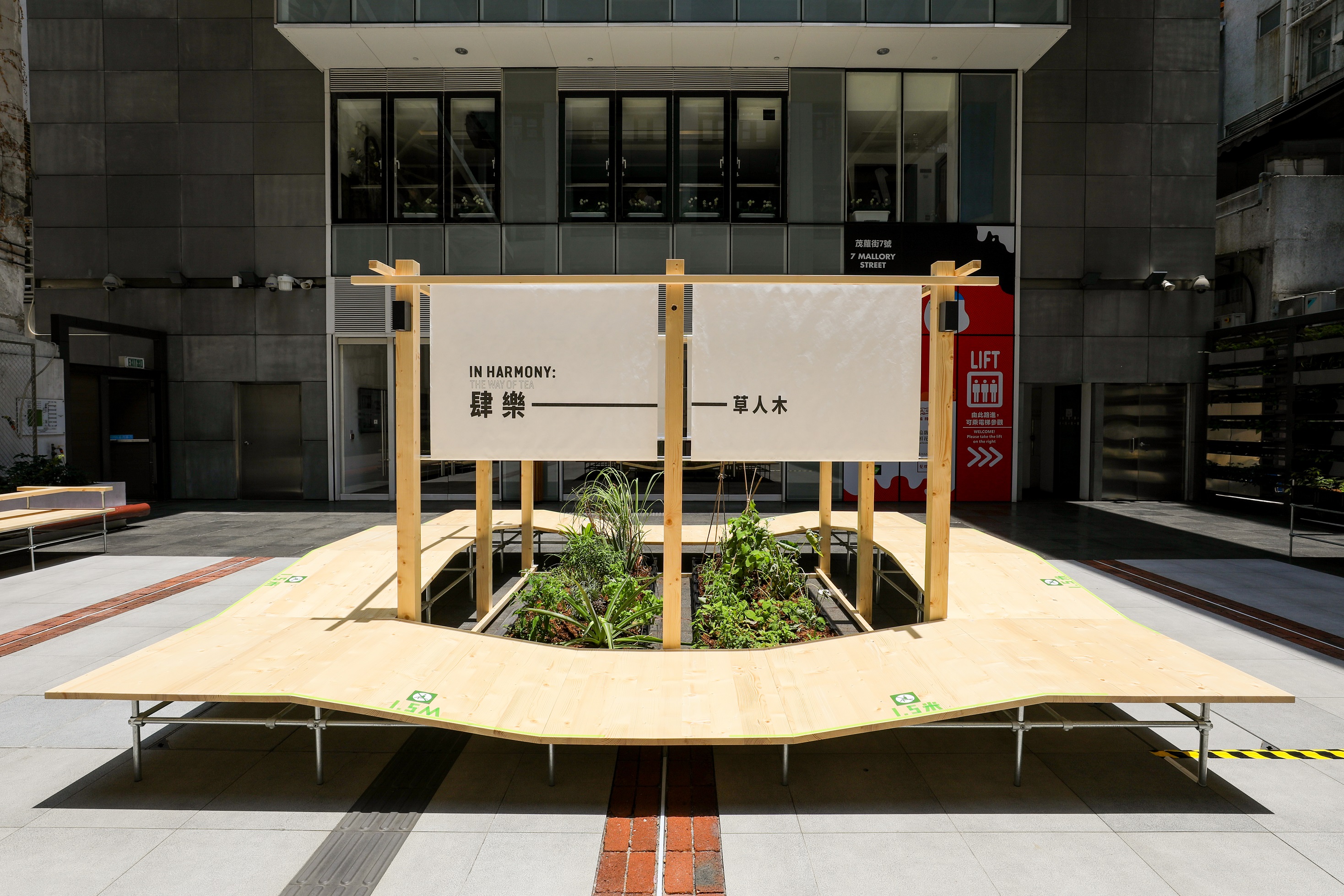Design, Nature and Human All in a Cuppa

Few would object that, in Asia, tea is the most popular everyday beverage next to water. It has long developed beyond a drink into a culture entailing ritual, craftsmanship and all sorts of design. With a millennia of history at its back, tea culture never ceases to evolve. So what does it mean in our time? What stories of design, nature and human does it extend to? In Harmony: the Way of Tea, Design Spectrum’s 4th exhibition staged at 7 Mallory Street until 19 July, leads us to explore this long-lived culture through the lens of design.

Amy Chow, the curator and Lee Chi-wing, the co-curator of the exhibition
“The Chinese character for tea is composed of elements of nature and human. It is what this exhibition is about — taking tea culture as a starting point to look into the relationship between design, nature and humanity,” said Amy Chow, the exhibition’s curator. From the 45 projects of 20 Asian creative groups featured, we can clearly see how design has been reinventing tea and its related artefacts and activities, from packaging to tea-making tools to tea room interior. Smart tea maker Lify turns herbal tea brewing from hours of cooking to a press of a button, bringing tea-making into the digital age. Local pottery group Toki Nashiki also has a strong belief that the goodness in life can be appreciated through the making and usage of functional pottery. They went to Shigaraki and created the whole series of wood-fired pottery which exactly showed the relationship between functional wares and human life. Product design brand Milk Design’s Mobile Standing Tea Bar renews our impression towards the tea ritual. “It is designed to fit tea tasting into the modern lifestyle and facilitate interactions during the process,” said the studio’s founder Lee Chi-wing.
The Chinese character for tea is composed of elements of nature and human. It is what this exhibition is about — taking tea culture as a starting point to look into the relationship between design, nature and humanity.

Smart tea maker Lify
Lee, also the co-curator of the exhibition, sees a strong connection between tea and design. “Humans studied nature, learnt from it and transformed it with creativity to create teas with a wide range of tastes, colours and fragrances. We designers open our senses to our surroundings as much as possible and create something new out of it with our creativity.” Tea, of course, is only one of the many great gifts of nature. Taiwanese designer Feng Cheng-tsung transforms bamboo into poetic yet functional utensils with exquisite artisanship, showing us a way of treating nature with utter respect. Hong Kong artist Annie Wan translated her experience with the villagers and nature in the countryside of Niigata, Japan, by casting and firing the produce treasured by the farmers there into ceramics. Turning familiar natural objects unfamiliar, her work Give Us This Day Our Daily Bread prompts us to rethink our take-for-granted attitude towards nature.
We designers open our senses to our surroundings as much as possible and create something new out of it with our creativity.

Give Us This Day Our Daily Bread by Hong Kong artist Annie Wan
Design and nature are major parts of everyday life, but they may sound rather abstract to many people. “Using tea as an entry point has effectively aroused people’s interest because almost everyone has had some experience with it,” said Lee. Other than the exhibition, the minimalistic Herbal Pavilion he and his team built as the commission work for Design Spectrum at the venue’s Public Open Space has attracted many people from the neighbourhood to visit and hang out. It also became an urban oasis in Wan Chai. Both curators are glad to see people having fun, “Staging the exhibition at the heart of Wan Chai, I want to convey the message that design is for everyone. That’s why the exhibition curating takes an open and friendly approach, inviting the audience to get close to the exhibits and experience design at a deeper level.” This way of planting the seeds of design culture in communities is what Design Spectrum sets out to do.
Staging the exhibition at the heart of Wan Chai, I want to convey the message that design is for everyone.

Herbal Pavilion
During the exhibition period, a series of public programmes has been curated to offer further hands-on experiences with design and nature, including herb-growing, tea-tasting and clay-pinching workshops. Design Spectrum also specially prepared an all-round experience workshop for tea lovers, “Beginning from a simple bowl of tea” . In order to create the ambiance for the workshop, co-curator Lee Chi Wing and his Milk Design team, have particularly created a tea space for the workshop to lead participants to experience the tea ceremony from a different angle; apart from that, Stickyline designed a paper cover for the tea room to change the perspective angle; the tea menu designed by Co-Design Ltd, together with the glass made by Rubywoo Glass, to bring participants a fresh sensation and a whole new tea journey! There were also online designer sharing and guided tours to learn more about the stories behind the curatorial concept and exhibits.
*In light of the current COVID-19 situation and for the health and safety of participants, precautionary measures will be adopted for the exhibition and its extended events, and the above schedule is subject to possible change or adjustment. For the latest updates, please visit the Design Spectrum website at https://www.designspectrum.hk/